
by Dave Coward
Background
Well it’s a bit like buses, you wait for ages for one to turn up and two turn up at the same time, in this case the Honk Kong Models B.IV Bomber Mosquito and now Tamiya`s Fighter Bomber, the FB.VI. Both kits retail at around the same price so this could be quite an interesting comparison. I`ve done a quick build of the HK Models version and it’s a nice build that you can read here.
Normally I tend to look for a scheme away from the ones provided in the box but one of those in the box had such a history to it (the box art one) that I just had to build this particular aircraft and below is the reason why.
Operation Jericho – Mosquito Attack on Amiens Prison – 18th February 1944
In 1943 many members of the French resistance movement in the Amiens area had been caught by the Germans and imprisoned in Amiens prison. Some had been betrayed by collaborators, and the entire movement in the area was at risk. By December 1943, 12 members of the resistance had been executed at the prison, and it was learned that more than 100 other members were to be shot on 19th February 1944. Dominique Penchard, a resistance activist, began sending information about the prison to London, including accurate details of the layout, defences, and duty rosters.
When two Allied intelligence officers – with possible knowledge of the D-Day invasion plans – were also captured and sent to Amiens prison, a precision air attack on the prison was requested, and the mission was allocated to the 2nd Tactical Air Force. The prison was located alongside a long straight road and surrounded by high walls. The guards ate in a block adjacent to the main building, making lunchtime the best time to eliminate the maximum number of guards. The balance of munitions used had to be carefully planned so that when hitting the main prison walls, they were breached and the doors sprung open without the building being destroyed. As well as destroying the guards’ mess hall, breaches had to be made in the prison’s outer walls to allow the inmates to escape. There were around 700 inmates in the prison and loss of life was inevitable during an air raid, but it was thought that many had already been condemned to death and it would give a chance for some at least to escape.
The Attack Force
No. 140 Wing of the RAF Second Tactical Air Force, based at RAF Hunsdon in Hertfordshire, was selected to carry out the raid using Mosquito FB Mk VIs. The Wing comprised 18 Mosquitos – 6 from No. 464 Squadron RAAF, 6 from No. 487 Squadron RNZAF, and 6 from No. 21 Squadron RAF, plus one aircraft of the Photographic Reconnaissance Unit (PRU), and was led by 28 year old Gp Capt Percy Charles Pickard – well known to the public at the time as the pilot of Wellington “‘F’ for Freddie” in the RAF film “Target for To-night”. Pickard was an experienced pilot and leader but was inexperienced in low level attacks and underwent 10 hours’ conversion training at Hatfield prior to the raid.
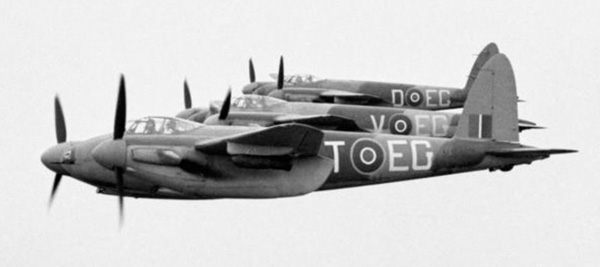
The Mosquitos of 487 Squadron were assigned the task of bombing the prison guards’ mess hall and breaching the outer prison wall in two places, while 464 Squadron’s aircraft were tasked with bombing the prison’s main walls if no prisoners were seen escaping. No. 21 Squadron was assigned with the grim alternative of bombing the prison and all in it, as requested by those prisoners aware of the proposed mission, should the initial bombing runs fail. The overall raid was to be led by Air Vice-Marshal Basil Embry, and was ready to go from 10th February. Close support was to be provided by Hawker Typhoons from No. 198 Squadron RAF and No. 174 Squadron RAF.
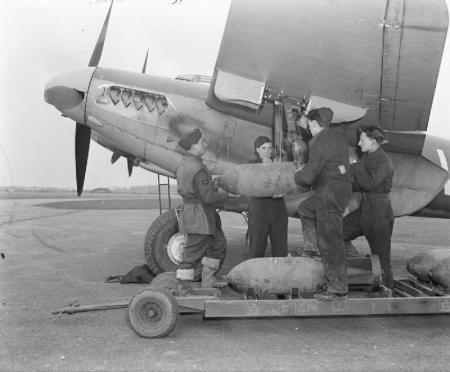
The Raid
Although Air Vice Marshall Basil Embry was originally intended to command the attack, he was scrubbed from the mission, as he was involved in the planning of the invasion of Europe. Pickard therefore took his place, despite his limited experience of low-level attack. The mission was delayed by very poor weather, which worsened after 10th February, with low cloud and snow across Europe. By 18th February it was not possible to wait any longer for the weather to improve, and the 18 Mosquitos, plus a PR (photo-reconnaissance) Mosquito, were readied. The crews were briefed at 08:00 under high security, the first time they had been made aware of the target. Pickard was to bring up the rear of the second wave of aircraft, to assess the damage and to call in 21 Squadron if necessary. In the event of anything happening to Pickard’s aircraft, the crew of the PR Mosquito would carry out the task instead.
The final decision to carry out the attack was made just two hours before the deadline for striking the target, and the Mosquitos took off from Hunsdon into weather worse than many of the crews had previously experienced. Four Mosquitos lost contact with the formation during the flight and had to return to base, and an additional one had to turn back due to engine problems, leaving nine to carry out the main attack with four in reserve.
The attack group approached Amiens from the east, using the very straight Albert-Amiens road as a guide. At 1203 hours three Mosquitos of No 487 Squadron attacked the eastern wall on a heading of 250 degrees, just clearing the wall with twelve bombs fitted with 11 second delay fuses, while two made a diversion attack on the local railway station before returning to the prison. The leader’s bombs were seen to hit the wall five feet from the ground, while other bursts were seen adjacent to the west wall and to overshoot into fields to the north. Two aircraft of No 487 Squadron attacked the northern wall at 1203 hours just clearing the wall on a heading of 150 degrees with twelve bombs. These attacks were directed at places later reported breached by reconnaissance aircraft. One bomb was seen to hit the large building, and the northern side of the eastern building was also reported hit.
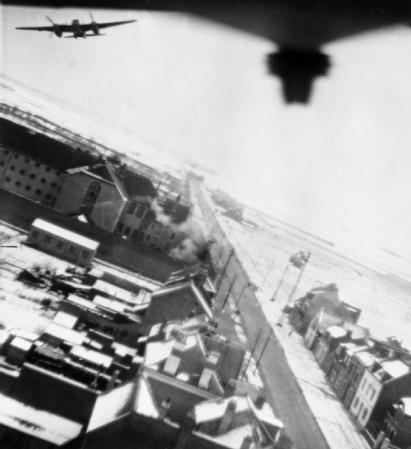
Two Mosquitos of No 464 Squadron bombed the eastern wall at 1206 hours from 50 feet (15m) heading 150 degrees and 250 degrees with eight 500lb bombs. The wall appeared un-breached by the first pass, and results of this second pass were unobserved.
Two further 464 Squadron Mosquitos bombed the main building at 1206 hours from 100 feet (30m) heading 150 and 250 degrees with eight 500lb bombs. The north wall appeared to be already damaged. One of these aircraft was seen to bomb and did not return. A direct hit on the guardhouse killed or disabled the occupants and a number of prisoners were killed or wounded, while many were able to escape.
The PRU Mosquito circled the target three times between 1203 and 1210 hours from 400 to 500 feet (120-150m) using a cine film camera but carrying no bombs. He reported a large breach in the eastern centre of the north wall and considerable damage to the extension building to the west of the main building as well as damage to the western end of the main building. A number of men were seen in the courtyard near the separate building which appeared to be workshops and three men were also seen running into fields from a large breach in the northern wall.
A Personal Account
Among the 700 inmates was Raymond Vivant, the sub-prefect of Abbeville who had been arrested by the Gestapo on 12th February on suspicion of Resistance activities. On the morning of 18th February, Vivant was preparing for his lunch when he heard the drone of aircraft engines followed by a loud explosion:
“I thought initially that a German plane had just crashed very close to us, and I began to delight in this when a succession of explosions resounded. Out of instinct, I leaned myself against an angle of my cell, while the panes of the fanlight flew in fragments. I saw the wall on the left side split open abruptly and a cloud (of) dust invaded my cell. I remained motionless, awaiting the end of the explosions, believing that an aerial combat had taken place above our heads. “Some planes have crashed with their bomb loads,” I thought. But, as soon as the cloud of dust dissipated, I saw that the door was torn from its hinges. The long corridor which served my cell, on both floors of the prison, an immense heap of stones, had been replaced by a cluster of smoking debris! On the right-hand side, the other part of the prison appeared intact. But, to the left, with inexpressible joy, I saw the countryside, covered with snow, extending to infinity; a large breach had been opened in the high surrounding wall…”
Needless to say, Vivant ran for his life and was one of the 258 prisoners who escaped.
Pickard shot down
Pickard, circling at 500 ft (150 m), saw prisoners escaping and signalled No. 21 Squadron’s Mosquitos to return home. As he turned for home, he was set upon by an Fw 190 fighter flown by Feldwebel Wilhelm Mayer of 7/JG 26. During the ensuing chase the Fw 190 severed the tail of Pickard’s Mosquito causing the aircraft to immediately flip over and crash into a field. Both Gp Capt Pickard and his navigator, Flt Lt J A Broadley were killed. They are both buried in St. Pierre Cemetery near Amiens.
One other Mosquito – MM404 SB-T of No 464 Sqn – was lost during the mission. After attacking the target, it was seen at Freneuville at 1210 hours at 50 feet (15m) leading its formation. It attacked a gun position and shortly afterwards dropped to starboard of the formation and was not seen again. It appears that shortly after leaving the target area; MM404 was hit in the cockpit by flak. Navigator Flt Lt R W Sampson was killed outright. The pilot, Sqn Ldr A I McRitchie, was wounded and did a high-speed belly landing in a snow-covered field near Freneuville, near Dieppe, to be taken prisoner. Flt Lt Sampson was buried at Poix-de-la-Somme, 25km SW of Amiens. One aircraft of No 487 Squadron was hit by light flak near Albert, having its starboard nacelle holed and its starboard wheel collapsed on landing. One damaged aircraft of No 21 Squadron landed at Ford. One aircraft of No 487 Squadron abandoned the mission south of Oisemont, the pilot being slightly wounded and the aircraft damaged.
There were 700 prisoners detained at the time of the attack and of this number 102 were killed, 74 wounded and 258 escaped. Among those who escaped were important members of the Resistance movement. It is unclear whether the Allied intelligence officers escaped. Of those who escaped, 182 were recaptured. The diversionary attack on the railway station delayed German troops by two hours.
Aircraft involved in the attack (all Mosquito FB Mk.VI)
Crews attacking the target
No 487 Squadron
‘R’ Wg Cdr Smith, DFC (Pilot) / Flt Lt Barnes, DFM (Navigator)
‘C’ Plt Off Powell / Plt Off Stevenson
‘H’ Flt Sgt Jennings / WO Nichols
‘J’ Plt Off Fowler / WO Wilkins
‘T’ Plt Off Sparkes / Plt Off Dunlop
No 464 Squadron
‘F’ Wg Cdr Iredale, DFC / Flt Lt McCaul, DFC
‘O’ Fg Off Monghan, DFM / Fg Off Dean, DFM
‘A’ Sqn Ldr Sugden / Fg Off Bridger
‘V’ Flt Lt McPhee, DFM / Flt Lt Atkins
PRU
‘C’ Flt Lt Wickam, DFC / Plt Off Howard
Missing
No 464 Squadron
‘F’ Gp Capt P C Pickard, DSO, DFC / Flt Lt J A Broadley, DSO, DFC, DFM
‘T’ Sqn Ldr A I McRitchie / Flt Lt R W Sampson
Crews instructed not to attack the target
No 21 Squadron
‘U’ Wg Cdr Dale / Fg Off Gabites
‘O’ Flt Lt Wheeler, DFC / Fg Off Redington
‘J’ Flt Lt Benn, DFC / Fg Off Roe
‘D’ Flt Lt Taylor, DFC / Sqn Ldr Livry DFC
Abortive Sorties
No 487 Squadron
‘Q’ Flt Lt Hanafin / Plt Off Redgrave
No 21 Squadron
‘P’ Flt Lt Hogan / Flt Sgt Crowfoot
‘F’ Flt Sgt Steadman / Plt Off Reynolds
Below is a copy of the secret planning signal for the raid as sent by No 2 Group on the morning of the attack giving final details of the attack
FEBRUARY 18th, 1944
EMERGENCY FORM “B” (Copy)
HNO T 140 A/F
UGI T 11 GROUP
V GPB GPB 5/18 ‘O’ FORM ‘B’
FROM 2 GROUP 180940A
TO 140 WING/AIRFIELD
INFO 11 GROUP, HQ T A F MAIN, HQ A D G B, HQ A E A F
SECRET QQX BT
AO,241 18th Feb.
Information: Mosquitos of 140 Airfield are to attack the prison at AMIENS in an attempt to assist 120 prisoners to escape. These prisoners are French patriots condemned to death for assisting the Allies. This air attack is only part of the plan as other assistance will be at hand at the time.
Date and Time: 18th February, 1944.
Zero 1200 hours.
Route: Base – LITTLEHAMPTON – Via appropriate lattice to TOCQUEVILLE – SENARPONT – BOURDON – One mile South DOULLENS – BOUZINCOURT – 2 miles west south west ALBERT – Target – Turn right – ST. SAVEUR – SENARPONT – TOCQUEVILLE – HASTINGS – Base.
Bomb Load: 2 x 500lb M C Mk.IV fused T.D. 11 secs.
2 x 500lb S A P fused T.D. 11 secs.
Method of Attack: All aircraft to attack at low level.
1st Attack: Six Mosquitos as detailed by O.C. 140 Airfield.
Intention: To break the outer wall in at least two places.
Method: Leading three aircraft to attack eastern wall using main road as lead in. Second section of three aircraft when ten miles from target will break away to the right at sufficient height to allow them to watch leading three aircraft and then attack northern wall on a North-South run, immediately following the explosion of the bombs of the leading section.
Timing: Attacks to be made at Zero hours.
2nd Attack: Six Mosquitos as detailed by O.C. 140 Airfield.
Intention: To bomb the main prison buildings.
Method: Leading three aircraft to attack south eastern end of main building and second section of three aircraft to attack the north western end of building. Attacks to be carried out in a similar manner to first attack above.
Timing: Attack to be made at Zero plus 3 mins.
3rd Attack: Six Mosquitos as detailed by O.C. 140 Airfield.
Intention: This force is a reserve, and will approach the target as in the previous two attacks, one section from east and one from north, but will only bomb if it is seen that one of the previous attacks has failed.
Method: As in 1st attack. Target will be decided by leader on approach.
Timing: Attack to be made at Zero plus 13 mins.
Fighter Support: Each formation of six Mosquitos will have one squadron of Typhoons as close escort. Fighters will rendezvous with Mosquitos as follows:-
1st Attack: 1 mile east of LITTLEHAMPTON at Zero minus 45 mins.
2nd Attack: 1 mile west of LITTLEHAMPTON at Zero minus 42 mins.
3rd Attack: LITTLEHAMPTON at Zero minus 32 mins.
Signals:
1st Attack: Bomber call sign: D Y P E G.
Ground control call sign: A I L S O M E on 2 Group guard 1.
Bomber leader may call escort direct in emergency on 11 Group guard 1.
2nd Attack: Bomber call sign: C A N O N.
Ground control call sign: B E L L F I E L D on 2 Group guard 1.
Bomber leader may call escort direct in emergency on 11 Group guard 1.
3rd Attack: Bomber call sign: B U C K S H O T.
Ground control call sign: G R E E N S H I P on 2 Group guard 1.
Bomber leader may call escort direct in emergency on 11 Group guard 1.
Fighter call sign: D U N L O P.
General: Emergency homing to FRISTON on 2 Group guard.
A.S.R. on 2 Group guard.
Special V.H.F. codeword: RENOVATE.
Notes: (1) Following each attack sections of three aircraft of each formation are to endeavour to regain close company as soon as possible.
BT 180940A.
XS
BARON AS FOR K WITH R +
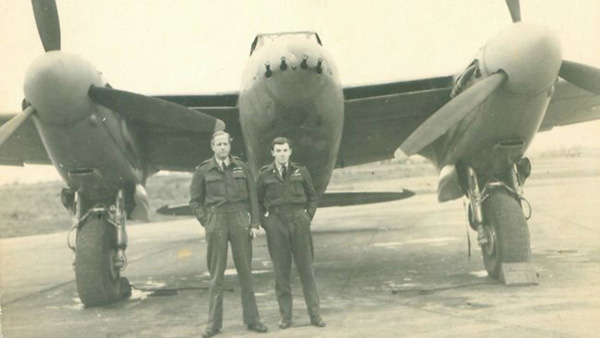
Gp Capt P C Pickard, DSO, DFC
Flt Lt J A Broadley, DSO, DFC, DFM
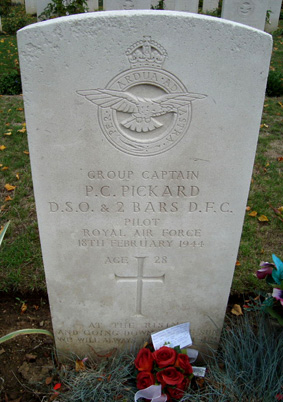

References used:
Mosquito FB.IV Airframe, systems and RAF wartime usage by Dave Brown –SAMI Publications
## IF YOU ONLY HAVE ONE REFERENCE BOOK THE ONE ABOVE IS THE ONE TO HAVE ##
MDF19 The De Havilland Mosquito
Haynes – The De Havilland Mosquito
The De Havilland Mosquito Volume 1 – Stuart Howe
The De Havilland Mosquito Volume 2 – Ian Thirsk
Mosquito – The Original Multi Role Combat Aircraft – Graham M Simons
Aftermarket Extras:
My plan with this Tamiya kit was to build it as much from the box as I could with the exception of some fabric seatbelts to replace the PE ones and some brass gun barrels. The kit PE belts and the plastic barrels are OK but these are two very easy additions that make a big difference – well I think they do.
With regards to the decals I will use the kit ones for the stencilling and smaller markings but the main markings will be sprayed on using Maketar Paint Masks.
• HGW Seatbelts
• Master Brass Gun Barrels
• Maketar Paint Masks
• Profimodeller Decal stencil set
The Kit…
This is Tamiya`s latest 1/32nd scale offering and as ever just getting your hands on the box gives you that reassuring felling of total quality. The box art is great and upon opening the box you are confronted with 23 Sprues (the export version, which this is, also has 3 more sprues of clear parts for the engine cowlings) of finely moulded plastic, a comprehensive instruction booklet, a reference booklet, a full colour markings sheet, decals and masks, a bag containing magnets and screws etc. and two PE sheets.